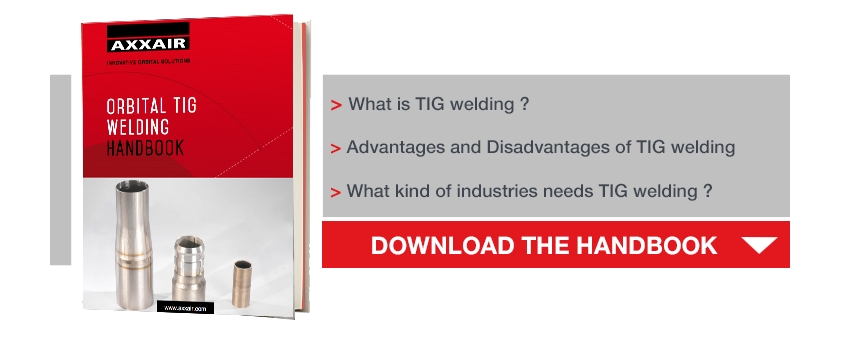Embedded cameras can be mounted onto open welding heads and are therefore a perfect asset when working on thick tubes or pipes, in high-risk areas (e.g. in the nuclear industry) or in confined spaces.
Operating from a distance in hazardous or crowded environments
Why should you use a welding camera on your orbital welding head in hazardous or confined areas? Their main purpose is to help execute welding operations from a distance.
See below, how the cameras could be helping you and what the main advantages of using them are.
#1 SAFETY AND COMFORT OF THE WELDER
The robust exterior and small size of the cameras allows for them to be used in any surrounding, no matter if it’s hot, cold, radioactive or if there’s not a lot of space. There are numerous environments where a welder – no matter how experienced – simply cannot or should not go, be it for reasons of safety or comfort.
#2 OPTIMIZED WELDING TIME
The welding time is also improved when using a welding camera. In fact, the camera can do a preliminary visual examination of the location to anticipate the situation which allows for the welder to prepare the necessary steps and materials. If the environment is hostile and the welder cannot work in it, the camera substitutes the welder’s eyes and it is no longer necessary for him to be right next to the orbital welding head! The operator of the camera and the welder keep an eye on the work as it progresses.
#3 SURFACE INSPECTION
Once the weld is complete, the camera can be used to check the surface and the weld to determine whether the result is acceptable or not. With the help of a color camera, the oxidation level and the quality of the gas protection of the final product and between the different welding passes can be inspected as well.
Download the guide for orbital TIG welding >>
One camera, multiple areas of application
Its main purpose is, as stated above, the application in the nuclear industry.
Therefore, limited space is not the main issue here. Of course it is also to be taken into account but the main concern is the safety of the operators and welders so that they are not exposed to radioactive radiation.
#1 BETTER CONTROL OF THE ORBITAL WELDING PROCESS
The camera can be set up directly in the joint of the tube or elbow that is to be welded, detached from the electrode, to monitor program settings such as the amplitude of the oscillation.
The power sources are used to control the positioning of the torch from a distance with the help of different motorized axes.
#2 REDUCED DOWNTIME
Thanks to the power sources, you can check all parameters while the weld operates.
That means you can see on the screen whether it is necessary to stop the weld. When working without a camera, you may at times feel the need to stop the weld to check the process. This is quite time consuming if done regularly.
With a welding camera, you save time that would otherwise be used to check the progress because you can follow the welding process on the power source’s screen in real time.
#3 MAKE ADJUSTMENTS IF NECESSARY
Examine the visual aspects and readjust the welding parameters in case of a problem. Once the weld is complete, you can check the surface to determine whether the result is satisfactory or not.
Whether you work in the nuclear industry or face situations in confined spaces on a regular basis, welding cameras are a valuable asset to welding and help increase productivity.
AXXAIR offers camera solutions for open heads, on request fitted for the customer's requirements and specifications.



